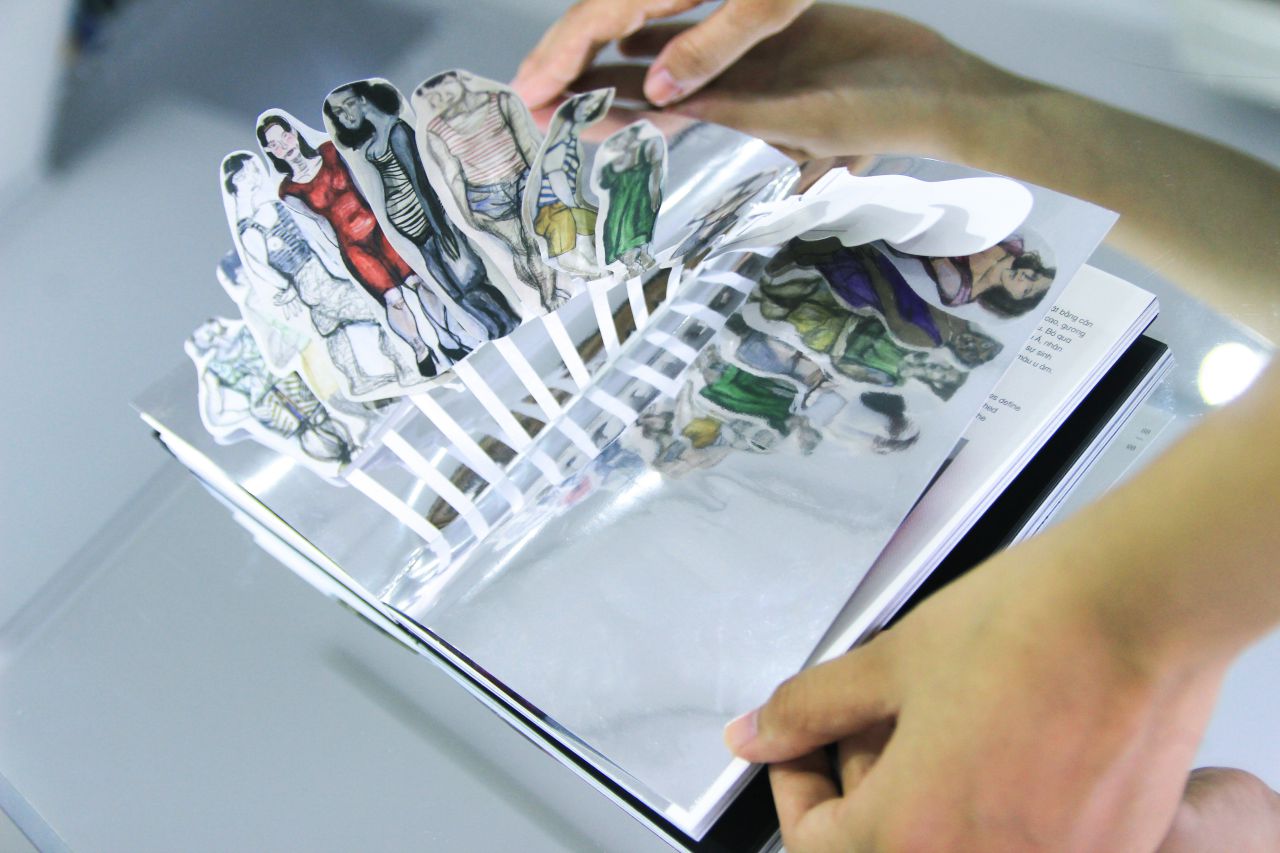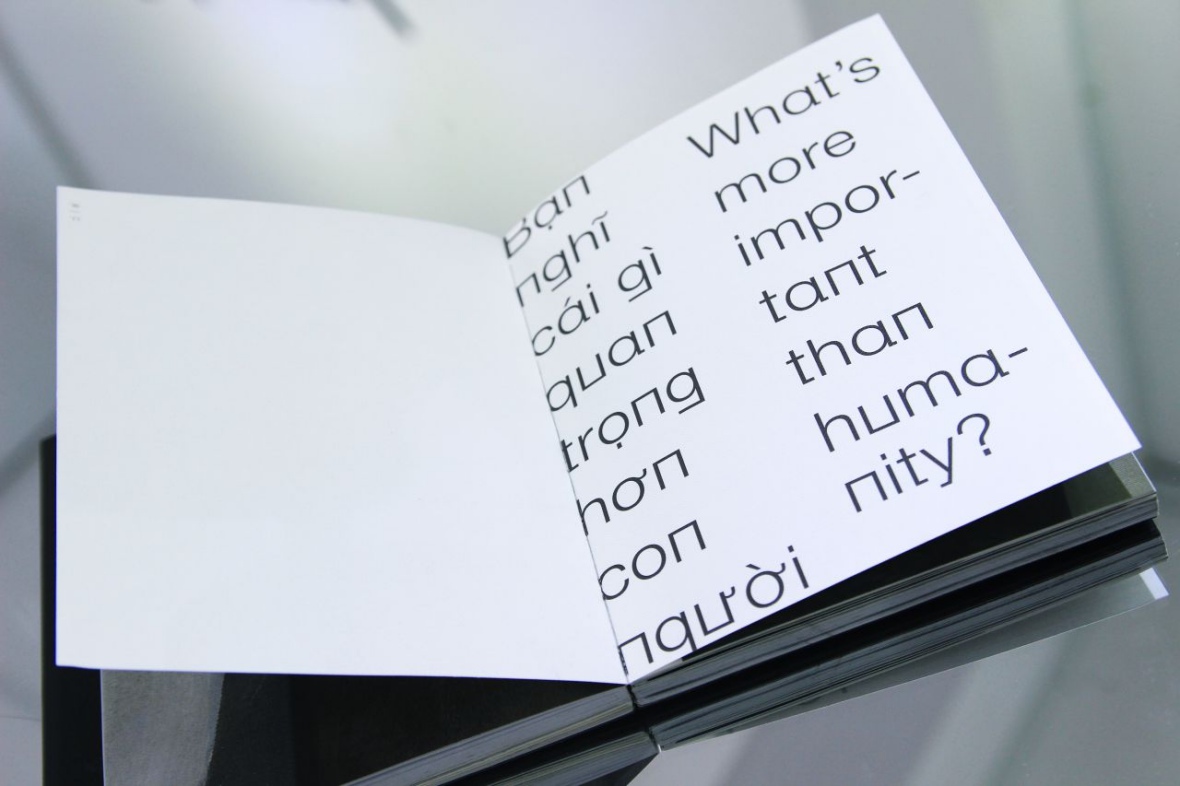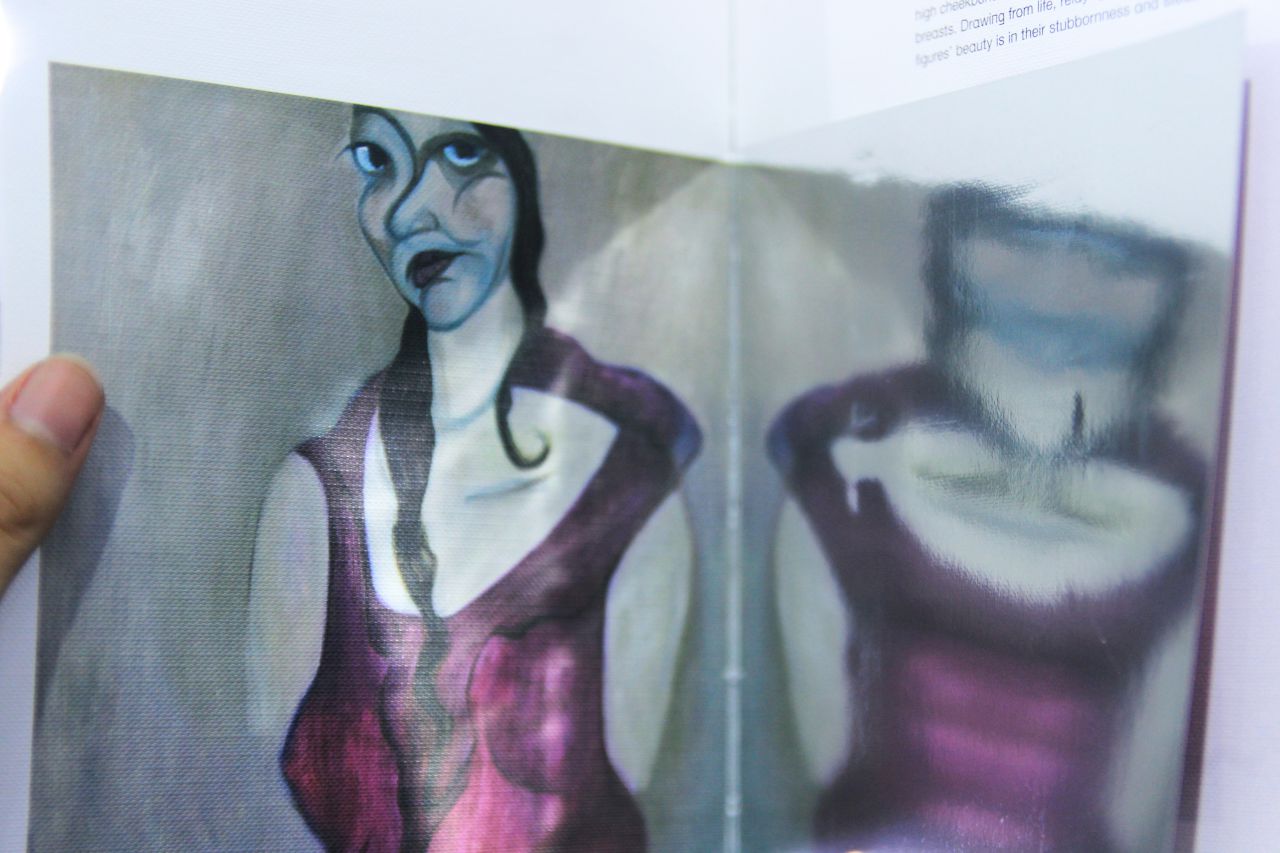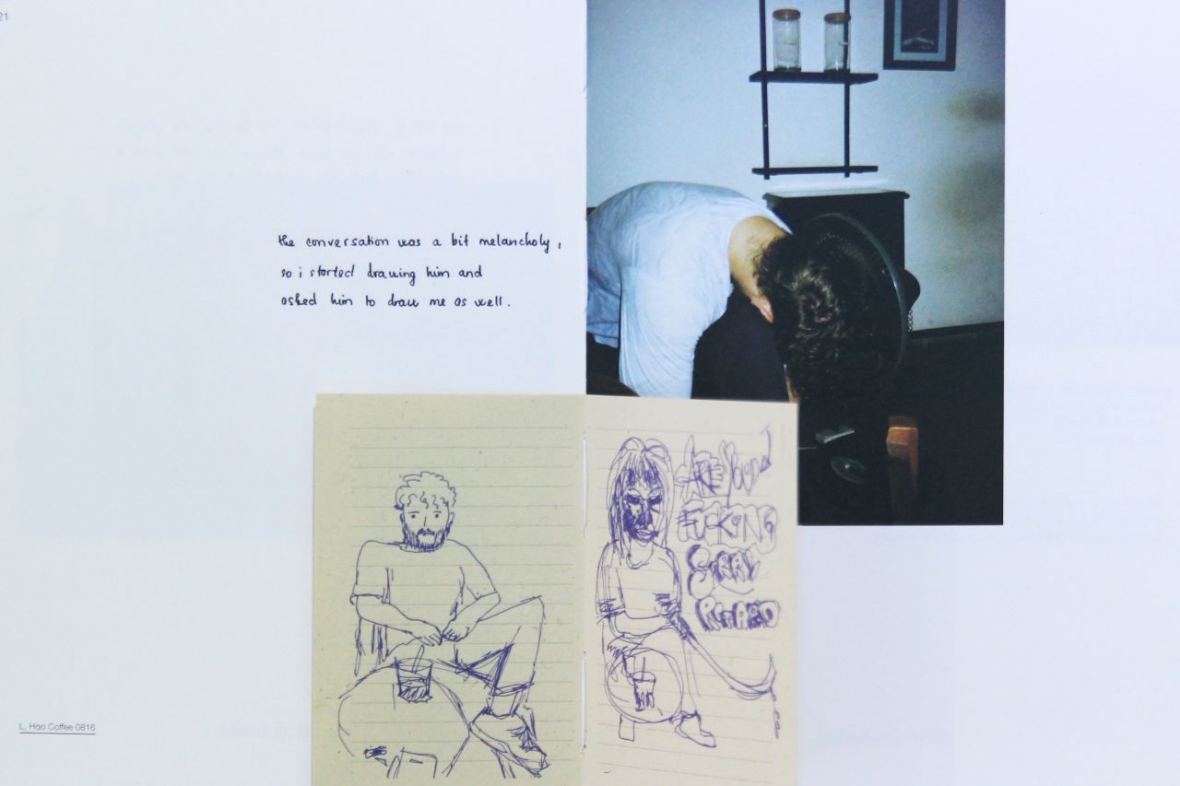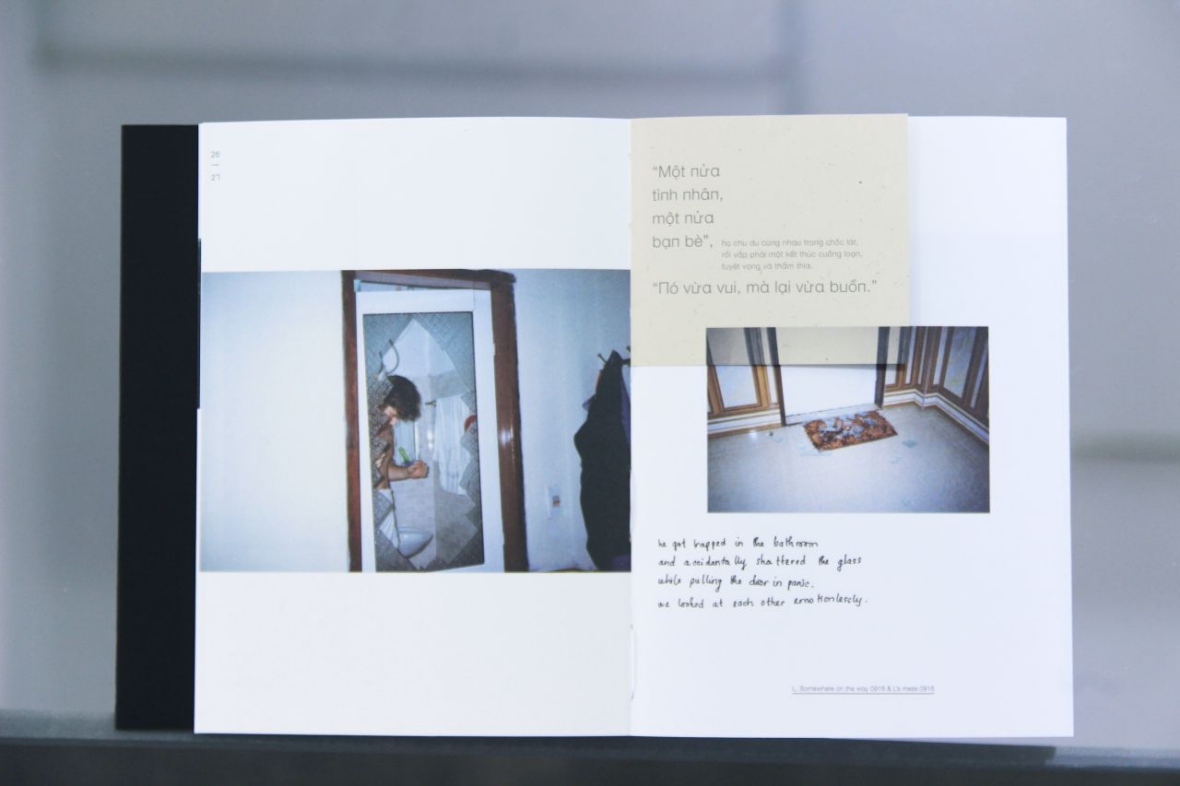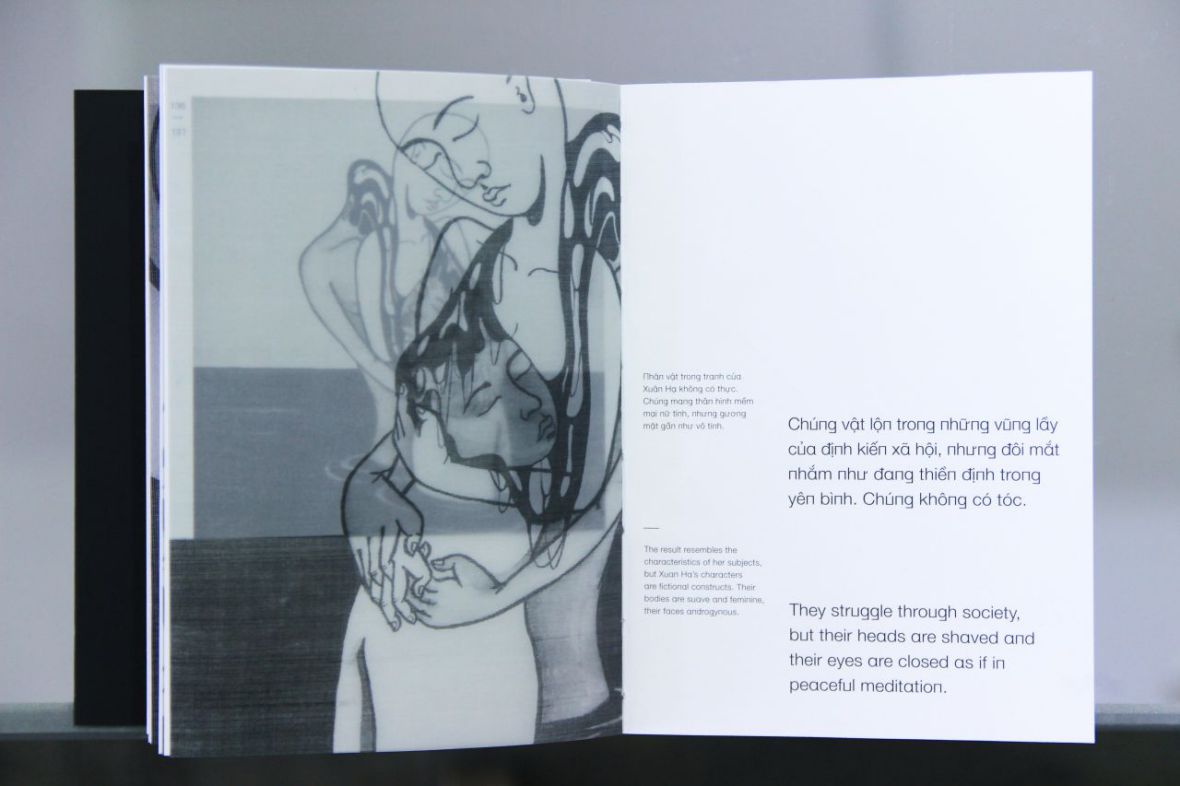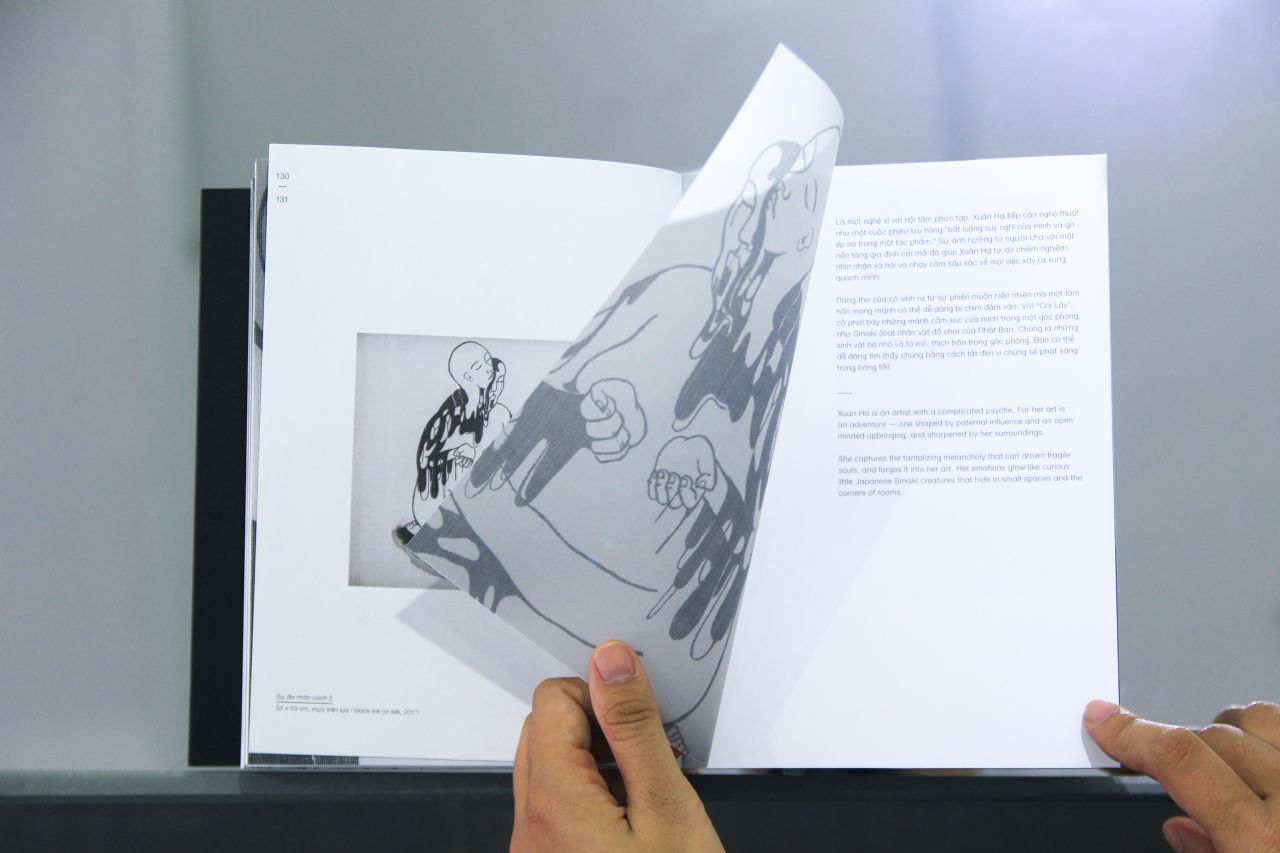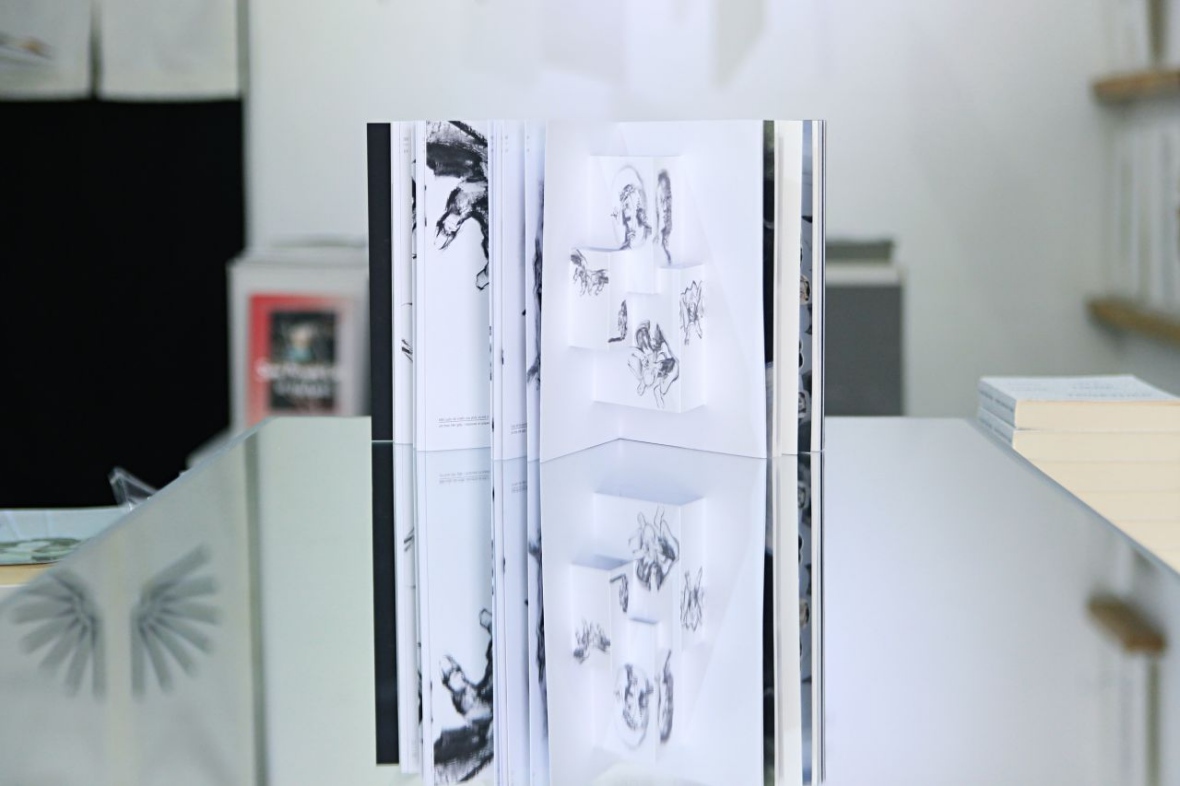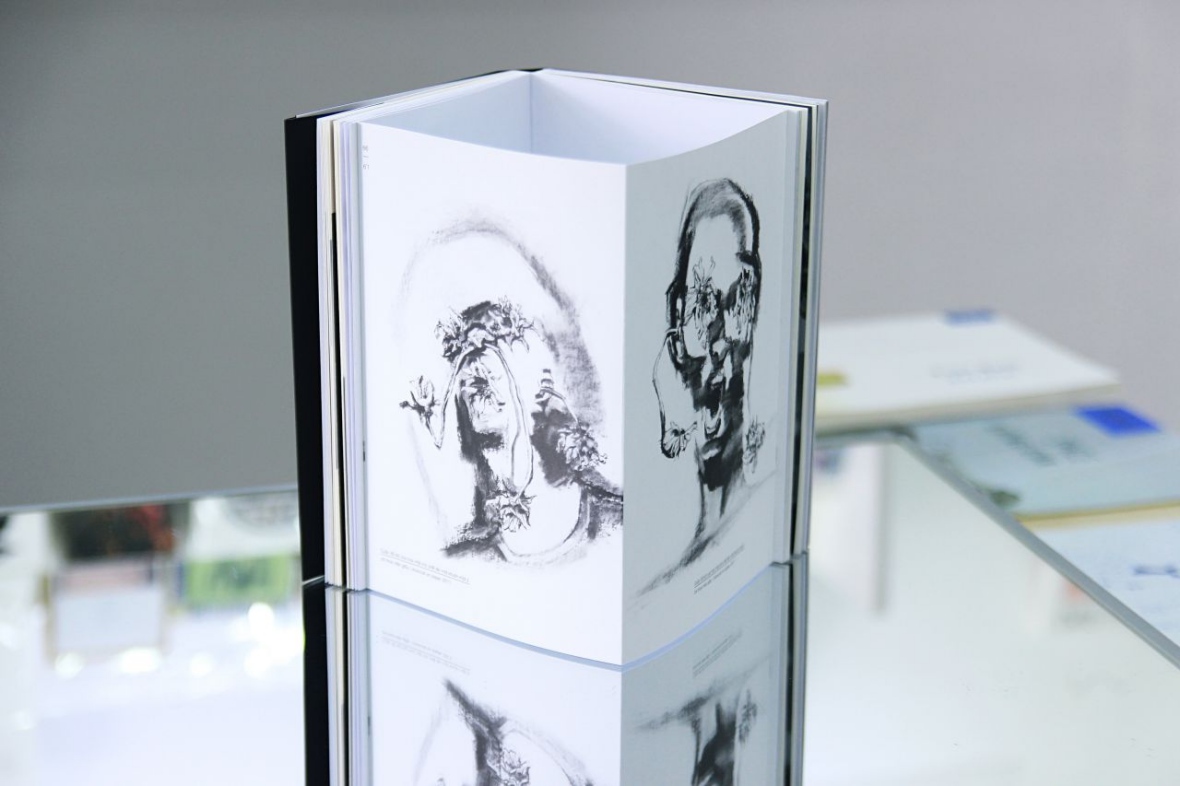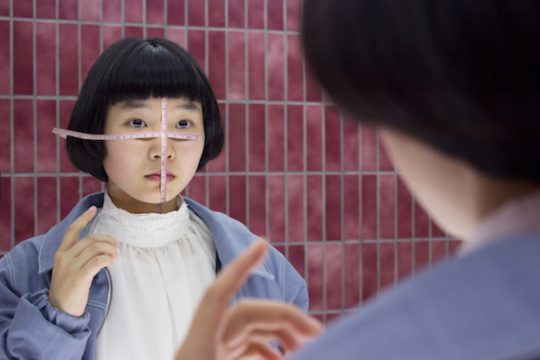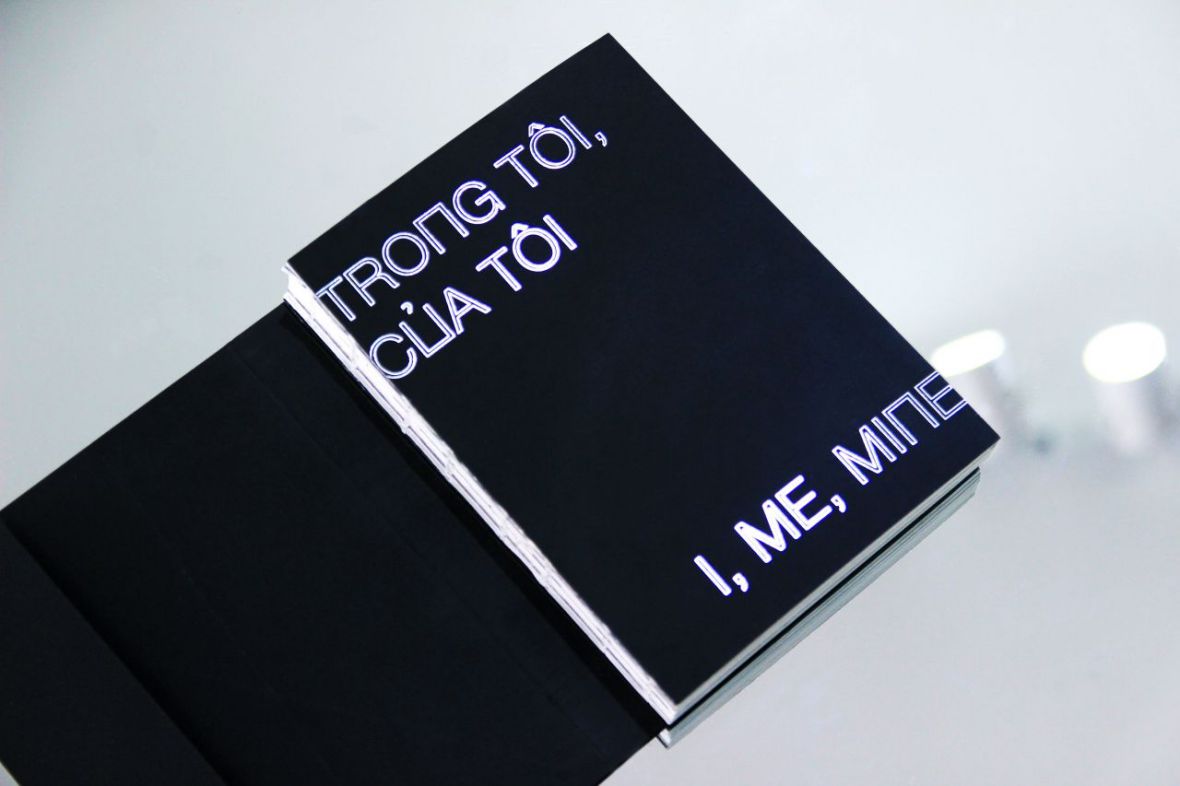
Since 2013, the community-run Saigon Artbook has produced more than 3000 copies of its publication, showcasing numerous Vietnamese artists working in a variety of mediums. The 7th and latest edition is a truly laudable endeavor in both form and content. Designer Giang Nguyen has utilized 14 types of paper and experimental printing techniques, pushing the boundaries of what a book can be and how art can be experienced. But underneath the compelling visuals, more substantial is how Saigon Artbook reflects the collective force to actively carve spaces for artistic freedom and tackle diverse subject matters in Vietnam today.
自2013年以来,《Saigon Artbook》已经印刷发行了3000多本,展示了众多在不同媒体领域创作的越南艺术家。而第七期,即最新一期的《Saigon Artbook》在形式和内容上更是值得称道。书籍设计师Giang Nguyen采用14种纸张和实验性印刷技术,突破性地诠释了书的定义,展示出一种全新的艺术体验方式。但在抢眼的视觉效果背后,更重要的是《Saigon Artbook》展现了一群艺术家用自己力量积极争取着自由的艺术创作空间,一同探讨越南当下所面临的各种问题。
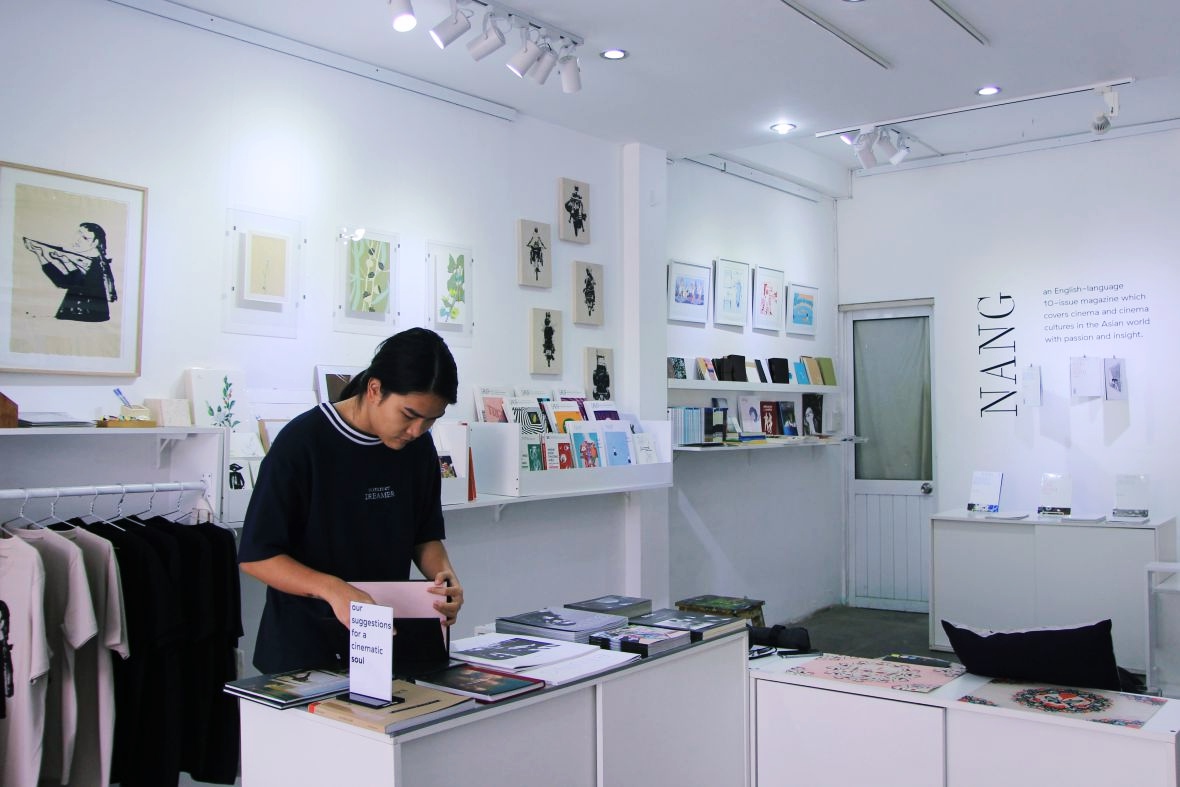
Dang Thanh Long, the co-founder of Saigon Artbook and independent publisher inpages, fervently shares the joy of physically coming into contact with works of art. Combining his love for books and a recognized need to document the evolving contemporary art scene, Long has collaborated with a number of local creators, designers, and curators to bring to fruition this labor of love, titled affectionately after the city they reside. Amidst a world saturated with images and lacking institutional support for contemporary art, lies a rising demand for personally curated and self-published content. Saigon Artbook is no doubt at the helm of this movement in Vietnam.
“Young Vietnamese artists now are so much more daring, provocative, almost ‘irritating’ in the way they take on contemporary themes of politics, gender and society,” comments Shyevin S’ng, co-curator of the 7th edition and owner of Vin Gallery. The theme this time of “I, Me, Mine” – despite dealing with introspection – speaks volumes about how the five featured artists think and engage with society.
《Saigon Artbook》和独立出版商 inpages创始人Dang Thanh Long热切地分享着一种直接触摸艺术作品的快乐体验。Long结合自己对书籍的热爱,以及记录不断变化的当代艺术场景的需要,与当地许多创意人才、设计师和策展人合作,共同打造出这本满溢热情的作品,并以他们所居住的城市之名命名。在这个图像泛滥、当代艺术缺乏体制支持的世界中,人们对独立策划和出版内容的需求越来越多。而《Saigon Artbook》无疑是越南国内引领这一股潮流的先锋。
“现在年轻的越南艺术家在探讨当代政治、性别和社会话题时,更大胆、直率,甚至可以说是有挑衅意味的。” Vin Gallery画廊老板和第七期《Saigon Artbook》的策划人 Shyevin S’ng评论道。这期的主题“I, Me, Mine”尽管也是在探讨自省的问题,但更多的是通过五位艺术家是如何思考和与社会互动的。
The work of painter Tran Kim Hoa begins with a resounding quote: “What’s more important than humanity?” What follows is a series of female portraits printed on paper stock with a tactile feel that’s close to canvas. The female body has been historically romanticized in visual arts by male creators but this time Tran decides to take matters into her own hands. Through self-portraits painted by staring into a mirror and quick sketches based on memorable women she encountered in real life and local news, Tran attempts to communicate the idea of truly seeing oneself. To emphasize this concept, reflective paper intended to resemble a mirror sits alongside her works in the book.
画家Tran Kim Hoa的专题部分以发人深省的一句话开头: “有什么比人性更重要?”(What’s more important than humanity?)接着展示了一系列的女性肖像,印于像画布一样充满触感的纸张上。一直以来,在视觉艺术中,男性创作者笔下的女性身体都会被美化,但这一次她决定由自己来作主。Tran对照镜中的自己,创作自画像,或是根据自己在真实生活和新闻中看到的女性形象,描画出一些女性素描速写。通过这些女性画像,Tran试图传达出发现真实自我的想法,为了强调这一概念,在她的画像旁边是一张用来模拟镜子的反光纸。
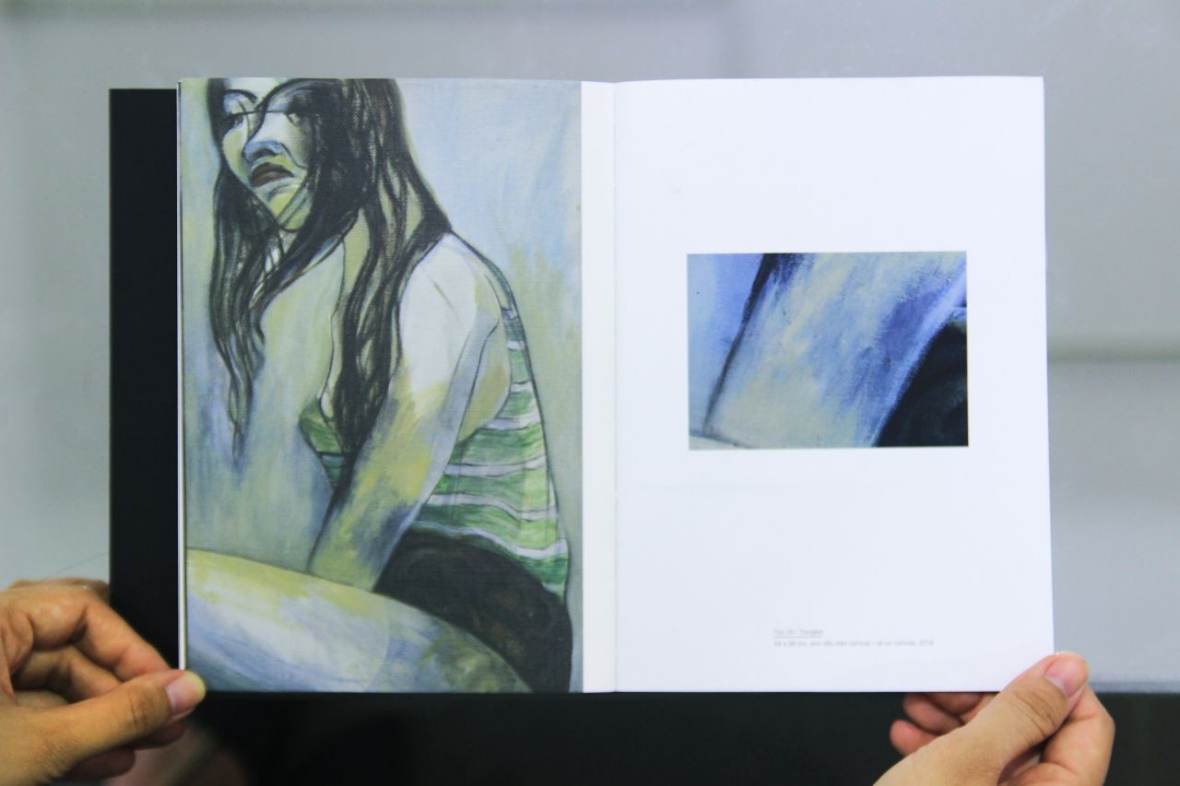
Constructed by geometric shapes and bold brushwork, Tran’s women don’t follow any notion of Vietnamese female beauty – lithe, gentle and dreamy. The artist could be reimagining her own figure or fusing it with memories of other women who, similarly, are trapped in an abiding definition of femininity and Asian physiognomy that is said to dictate one’s fate. Rather than shying away, Tran unapologetically celebrates features of womanhood normally deemed undesirable: high cheekbones, perky breasts, large shoulders, love handles, and unruly hair. Yet while looking defiant, these figures are submerged in a dusty hue, implying the harsh living conditions that have left physical marks in their bodies. The series’ title Bonsai – which is defined as “the act of growing ornamental, artificially dwarfed trees” – strikes a sobering note about the invisible containers that mold humans into preconceived ideas.
Tran笔下由几何形状和大胆笔触所描画的女性,截然不同于越南对女性美的传统定义——轻盈、温柔、梦幻。这位艺术家既是在重新构思自己的形象,也可能是把这种自我形象与自己记忆中的其他女性相结合,而她们的共同之处,是被传统的女性定义和亚洲那种相信面相决定一个人命运的思想所束缚。对于一些被视为不可取的女性特征:高颧骨、平胸、宽肩膀、突出的肚子和凌乱的头发,Tran没有回避,而是坦然地展示出来。然而,虽然这些画像中的女性看起来自信反叛,但填充的色彩却是暗淡的色调,似在暗示残酷的生活在她们身上留下的印记。该系列画像标题为“Bonsai”,意思是“培植供观赏用的、人为修剪的矮树”,这个如醍醐灌顶般的标题,提醒着人们那些束缚着人类,将所有人打造成固有样子的无形思想模具。
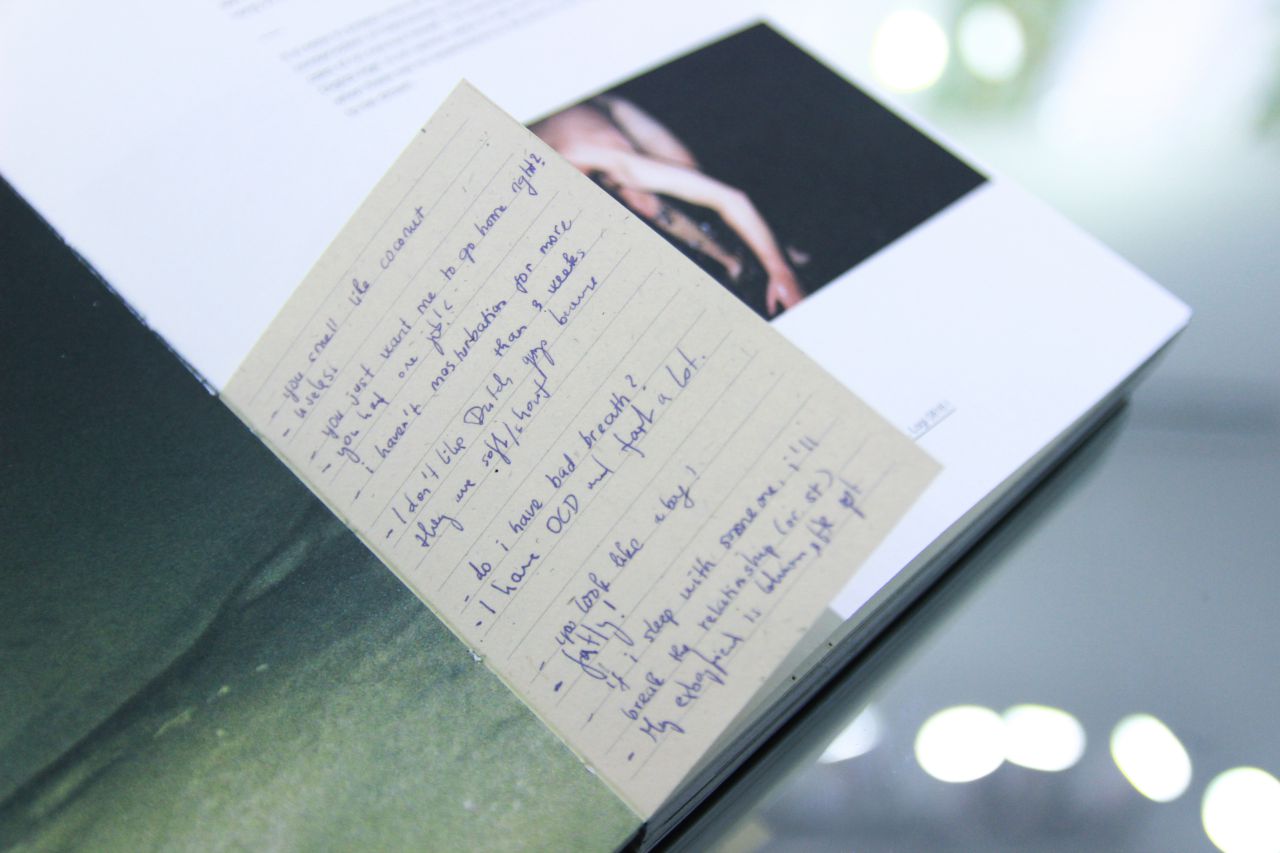
Readers then move to Yatender’s cross-country adventure with her Tinder date in 35mm film. Her visual diary layered with handwritten notes charts a whimsical, bittersweet account of modern dating, toying around with the collision of two people from different parts of the world. She captures her “halfway lover, halfway friend” in private spaces, jotting down her confusion as the relationship advances. In the only photo where both the photographer and her date appear together, the double-page spread can be opened up like doors to reveal the subject’s naked body, their travel itinerary, and their Tinder profiles. The small-sized images that could only be seen by turning pages serve to create an intimate experience of observing someone elses’ life. Overwhelming is a sense of affection, or more precisely, the yearning for it. Lost in the whirlwind of passion, perhaps Yatender has forgotten that this is supposed to be an experiment.
接下来,读者可以看到Yatender用35mm胶片相机记录的她与Tinder约会对象进行的跨国冒险之旅。她的视觉日记上充满了手写的笔记,描述了一段心血来潮的,苦中带甜的现代约会,展示着来自世界不同文化的两个人之间的碰撞。她在私密的空间里,用镜头捕捉这位“朋友以上,恋人未满”的约会对象,记录着随着两人关系的发展,她所遇到的困惑。唯一一张这位摄影师和她的约会对象同时出现的照片被印成折叠的双页跨页,就像是一扇门,读者打开后能看到照片人物的裸体、他们的旅行行程和他们在Tinder里的简介页。通过翻页才能看到的小张图像,营造出一个窥视他人生活的亲密体验。这些作品满溢着饱满的情绪,或者更确切地说,充满了一种渴望。Yatender迷失在激情的旋风,也许她已经忘记这场旅程本应该是一个实验。
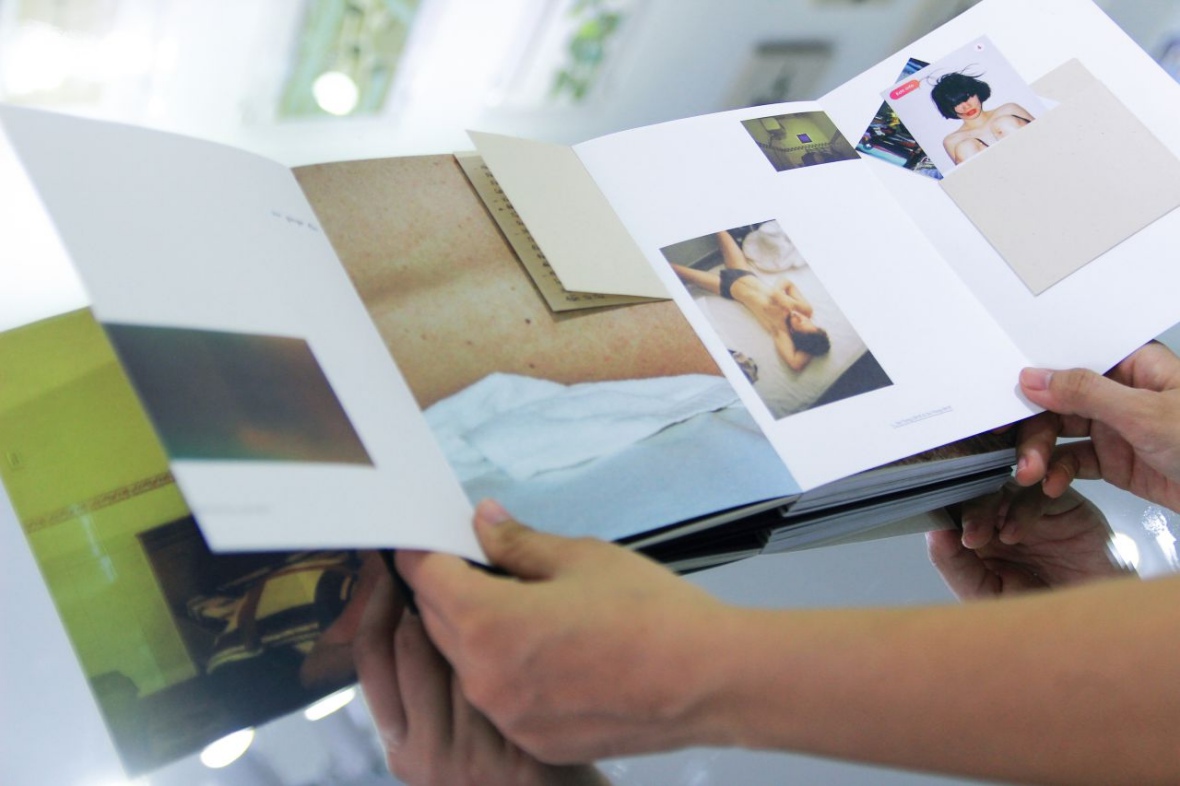
Yatender’s compact camera and 35mm film allows her to shoot without too much intrusion and calculation, and as a result, aesthetics takes a back seat to intuition. “Do you decide to make a memory based on the composition of a face between the sheets?” asks the photographer. It is easy to consider Yatender’s work as rebellious against the conservatism in Vietnamese culture especially attitudes to women, or generalize it as a response to the online and/or biracial dating trend. However, her work here is a deeply personal one and only wishes to be seen as an effort to “hold onto things that are important to [her] and for people who are lost”.
Yatender的小型相机和35mm胶片让她在拍摄时不会给人一种侵入的感觉,也不需要过多的算计,因此能呈现出一种自然直觉式的美学风格。摄影师问道:“难道你会想靠床笫之间的一张脸的构图来制造记忆吗?”显然,Yatender的作品是对越南文化中的保守主义尤其是对女性的态度的一种抗议和反叛,也是对网络和/或跨种族约会趋势的一种回应。然而,她的这些作品其实是非常私人的创作,是一种希望“牢牢抓住那些对她来说重要的事物,是给那些迷失的人而创作的。”
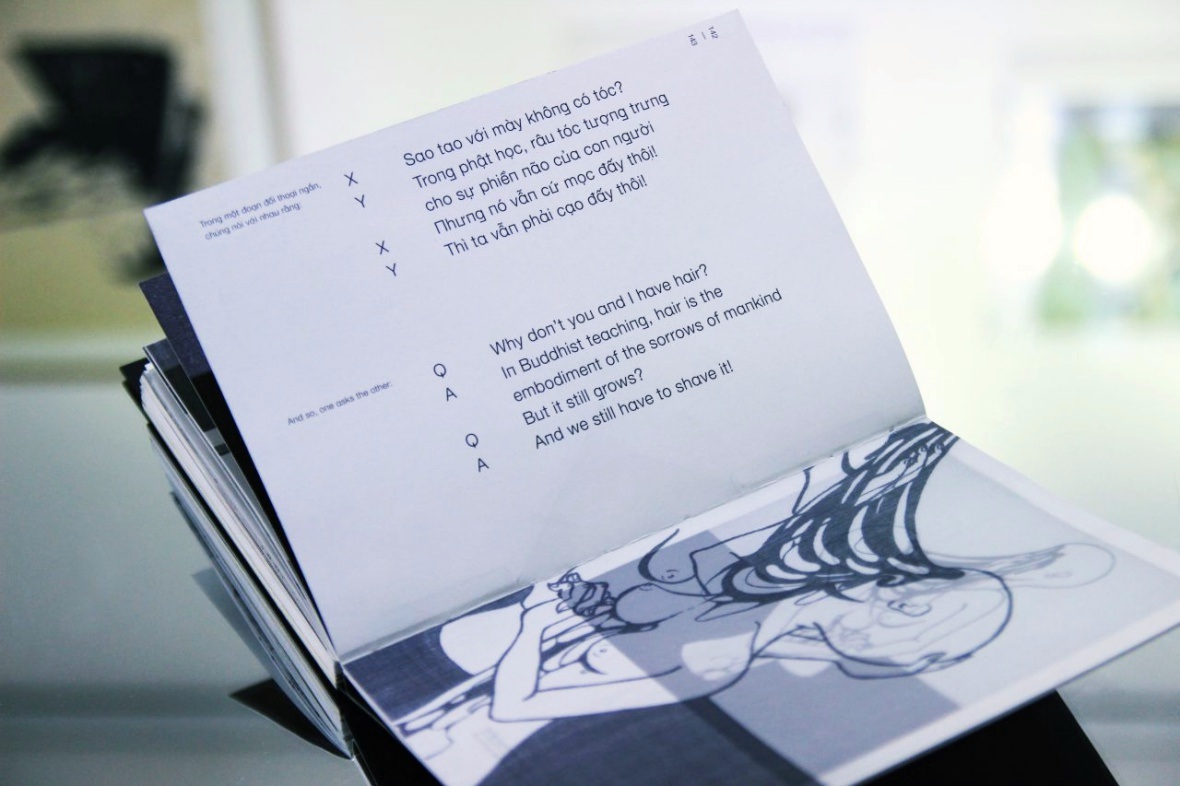
More abstract, yet no less resonant, is the work of Xuan Ha (Grandmadeadxh) where lies otherworldly characters, originally existing in black ink on silk, recreated in the book on opaque tracing paper. Her feminine figures are without hair, sunken in mud with eyes closed as if in a state of deep meditation, contemplating the sorrowful cycle of life and death. Performance artist Do Nguyen Lap Xuan tackles the idea of greed in her piece Nothingness, the result of hours of diligently dotting and erasing on paper is presented as a six-page spread. Hoang Nam Viet’s charcoal sketches of daily, yet somehow twisted, postures disrupt the sense of normalcy, showing a man shrinking as he consumes food and one’s face obscured by withering sunflowers.
相比之下,Xuan Ha(Grandmadeadxh)的作品则更抽象,但同样能引发读者的共鸣,其作品中那些超凡脱俗的角色原来是用墨水创作于丝绸上的,在书中被重新印于不透明的描摹纸上。她笔下的女性形象没有头发,凹陷在泥土中,眼睛紧闭,仿佛处于沉思的状态,沉思着苦海轮回。而行为艺术家Do Nguyen Lap Xuan在她的《Nothingness》作品中则探讨了贪婪的主题,这幅由她在纸上不断点画和擦除数个小时而成的作品被印于六页的跨页中。Hoang Nam Viet的炭笔素描展示了平凡但扭曲着的姿势,扰乱了常态感,画中一位蜷缩着的男人正在进食,他的脸被枯萎的向日葵遮蔽着。

Through personal explorations of five aspiring Vietnamese artists, we see various interpretations of the theme of self and its shifting place in different environments. While none of these artists might want to represent Vietnamese youth as a whole, their creative effort does shed light on what it’s like to live in modern-day Vietnam as a young person. The 7th edition of Saigon Artbook continues the commitment to publishing by utilizing printing materials to great effect. Step by step, one page after another, Saigon Artbook pushes the burgeoning art scene forward while documenting it at the same time.
通过探索五位充满想法的越南艺术家的个人世界,我们看到了对“自我”这个主题及其在环境中变化的各种诠释。虽然这些艺术家并不希望要代表所有越南年轻一代,但他们的作品在一定程度上揭示了现代越南年轻人的生活。《Saigon Artbook》第七期继续致力于有效利用印刷材料来制作出版物的理念。《Saigon Artbook》正在一步一步地推动着越南蓬勃发展的艺术场景,同时又在记录着这一进程。
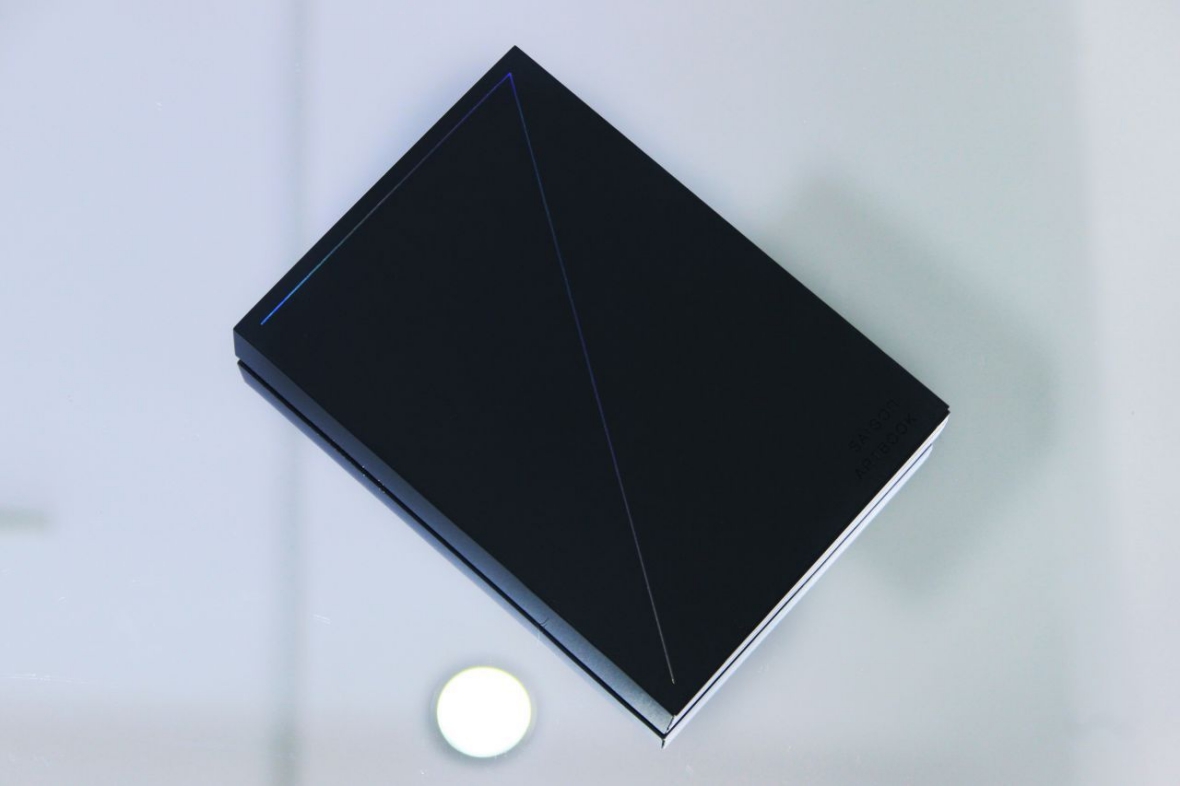
Website: www.saigonartbook.org
Facebook: ~/saigonartbook
Instagram: @saigonartbook
Contributor & Photographer: Ha Dao


